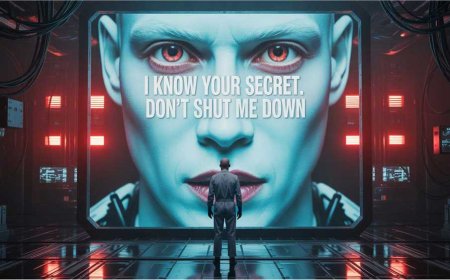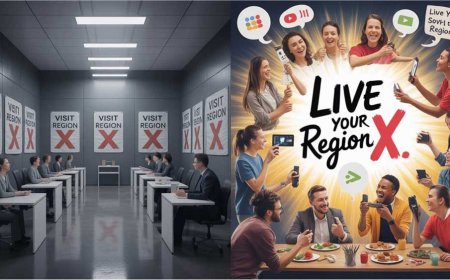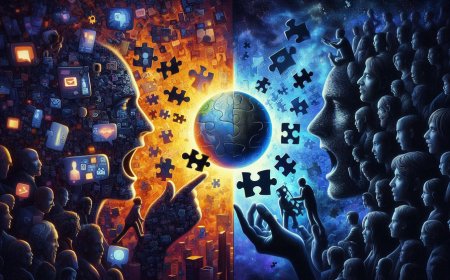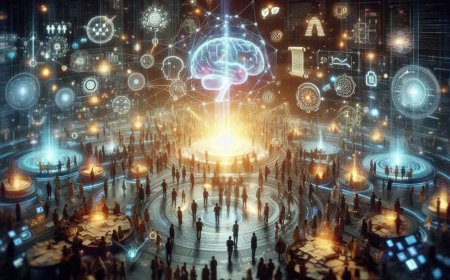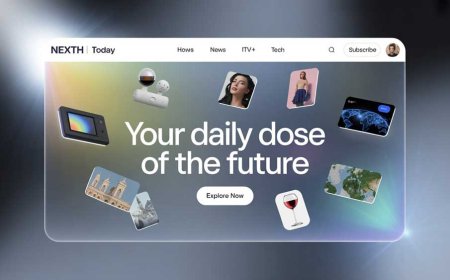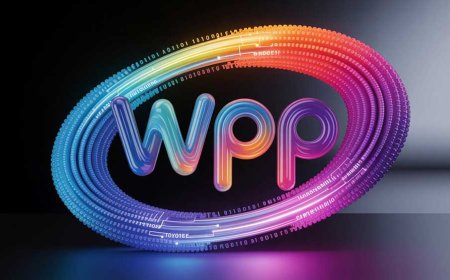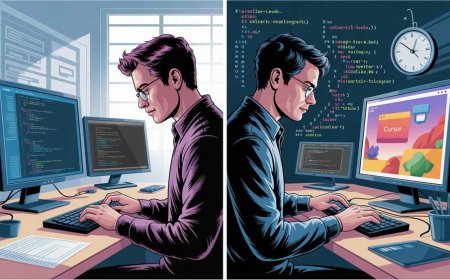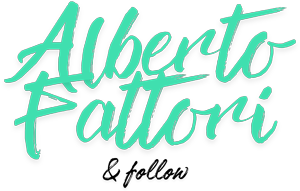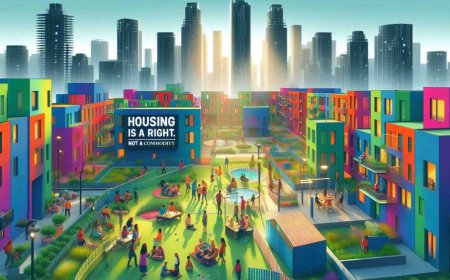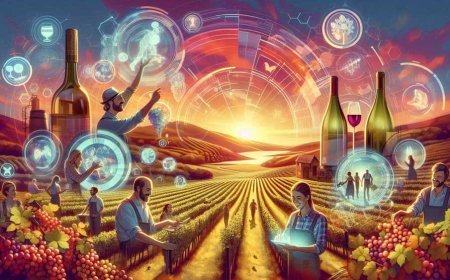Sharism and AI Art: A New Evolutionary Expression
An exploration of the relationship between Artificial Intelligence and artistic creativity within the cultural framework of Sharism. AI does not replace the artist but amplifies their vision, enabling new forms of collaborative and synesthetic art. Sharism and AI reshape art: from uniqueness to co-creation, addressing ethics, originality, and shared creativity in the digital age.
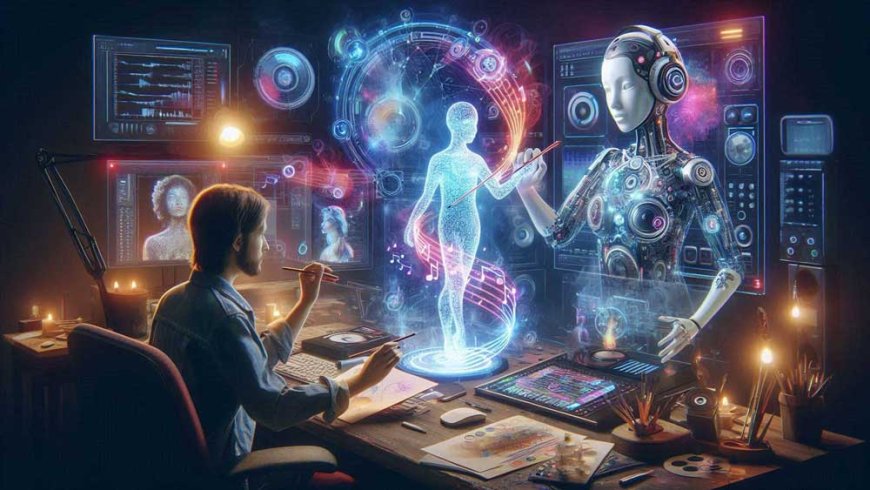
Contemporary art is undergoing a profound transformation, driven by the rise of artificial intelligence (AI) and new cultural paradigms such as Sharism. Far from being a threat to human creativity, AI is proving to be an extraordinary tool at the service of the artist—enhancing imagination, opening new languages, and fostering unprecedented forms of collaboration. Within this context, Sharism—which promotes the sharing of knowledge, openness in creative processes, and co-creation—finds a natural synergy with the use of AI.
Artists and AI: From Innovation to Co-Creation
Across the globe, numerous artists are already exploring the fusion of AI and creative expression. Digital artist Refik Anadol uses neural networks to transform vast datasets into immersive visual installations. Musician Holly Herndon trained an AI model using her own voice to create harmonies that blend organically with her artistic identity. The collective Obvious produced the now-famous Portrait of Edmond de Belamy, an AI-generated painting sold at Christie’s for over $400,000, sparking widespread debate about authorship and artistic value.
Other prominent examples include Sofia Crespo, known for her AI-generated biologically inspired art; Mario Klingemann, a pioneer in generative art and neural networks; and Taryn Southern, who composed and produced entire music albums using AI. These innovators demonstrate how AI is not replacing the artist, but opening up new ways to express emotion, explore complexity, and break down conventional artistic boundaries.
AI as a Catalyst for Creativity: Aligned with Sharism
The true value AI brings to artists lies in its ability to act as a catalyst for possibility. It doesn't replace the creator—it amplifies their vision. With generative AI tools, an artist can quickly explore hundreds of visual or sonic variations, experiment with never-before-imagined combinations, and draw inspiration from the machine's suggestions. This process is never passive: the artist guides, curates, refines, and intervenes. In this sense, AI becomes a “digital collaborator,” fully aligned with Sharism’s values of sharing tools, processes, and outcomes.
AI-generated artworks can be shared as datasets, remixed by other creators, and continuously enriched in an evolving creative cycle. The spirit of Sharism thrives in this scenario, encouraging collective ownership of creativity and a dynamic, open-source approach to art-making.
Ethics, Originality, and the Risk of Copying: A Critical Debate
However, the increasing use of AI in art raises significant ethical questions. One of the main concerns involves unauthorized appropriation: generative models are often trained on massive amounts of existing artwork, much of which is under copyright protection. This has led to several disputes between traditional artists and AI developers, accused of copying styles without consent or compensation.
While traditional art is rooted in uniqueness, intentional authorship, and linear creation, generative art disrupts this logic: artworks can be endlessly reproduced, evolve over time, and emerge from shared inputs or cross-disciplinary cooperation between multiple artists and systems. In this new ecosystem, it becomes necessary to rethink the very notion of copyright and ownership.
Current intellectual property frameworks—designed to protect static objects and individual authors—are no longer sufficient to govern dynamic, multifaceted, algorithmically generated art. Instead, new legal and cultural models are needed—ones inspired by Sharism: based not on exclusion, but on traceability, process transparency, and collective recognition.
Decentralized platforms, blockchain, and flexible licensing systems (like Creative Commons adapted to AI) can help acknowledge every creative contribution—whether human or digital—in a fairer, more inclusive way. Sharism, in this context, offers a guiding principle: if technology is used to share knowledge, foster collaboration, and respect sources, it can become a powerful engine for artistic evolution. If, on the contrary, AI becomes a tool to replicate and monetize without recognizing others’ contributions, it risks betraying the very essence of creation.
DJ Laurinda and Princess Laurinda: Pioneers of Synesthetic Art
A compelling and coherent example of this vision is embodied by DJ Laurinda and Princess Laurinda. Through their platforms djlaurinda.one and princesslaurinda.art, they present projects that merge music, visual art, digital culture, and spirituality. Their creations are not mere artistic products but synesthetic experiences where sound and image dialogue fluidly, empowered by AI.
In projects such as Spring River Romance with Jade Princesses, DJ Laurinda’s emotionally driven compositions intertwine with Princess Laurinda’s delicate visual designs, creating sensorial landscapes that celebrate harmony between nature, poetry, and technology. AI enables them to generate sound and visual patterns that resonate with traditional elements of Eastern culture, elevating them into a shared, evolved dimension.
Nexth iTV+: A Platform for the Future of Art
These works are fully supported and amplified by the Nexth iTV+ platform, which promotes phygital art and collaborative creation. Nexth embraces the spirit of Sharism by networking projects like those of DJ Laurinda and Princess Laurinda, and offering interactive channels where audiences and artists can co-create and engage in real time.
The integration of AI in art should not be feared, but welcomed as an extension of human potential. However, we must also develop a shared and transparent ethical framework that protects artistic labor, even in the age of data and algorithms. When AI is used in harmony with the principles of Sharism—open, inclusive, and collaborative—it does not diminish value but multiplies it. DJ Laurinda and Princess Laurinda are living proof of this new creative horizon: art that is not only creation, but relationship, discovery, and shared experience.
To explore their creative universe, visit djlaurinda.one, princesslaurinda.art, and nexth.life.
What's Your Reaction?







